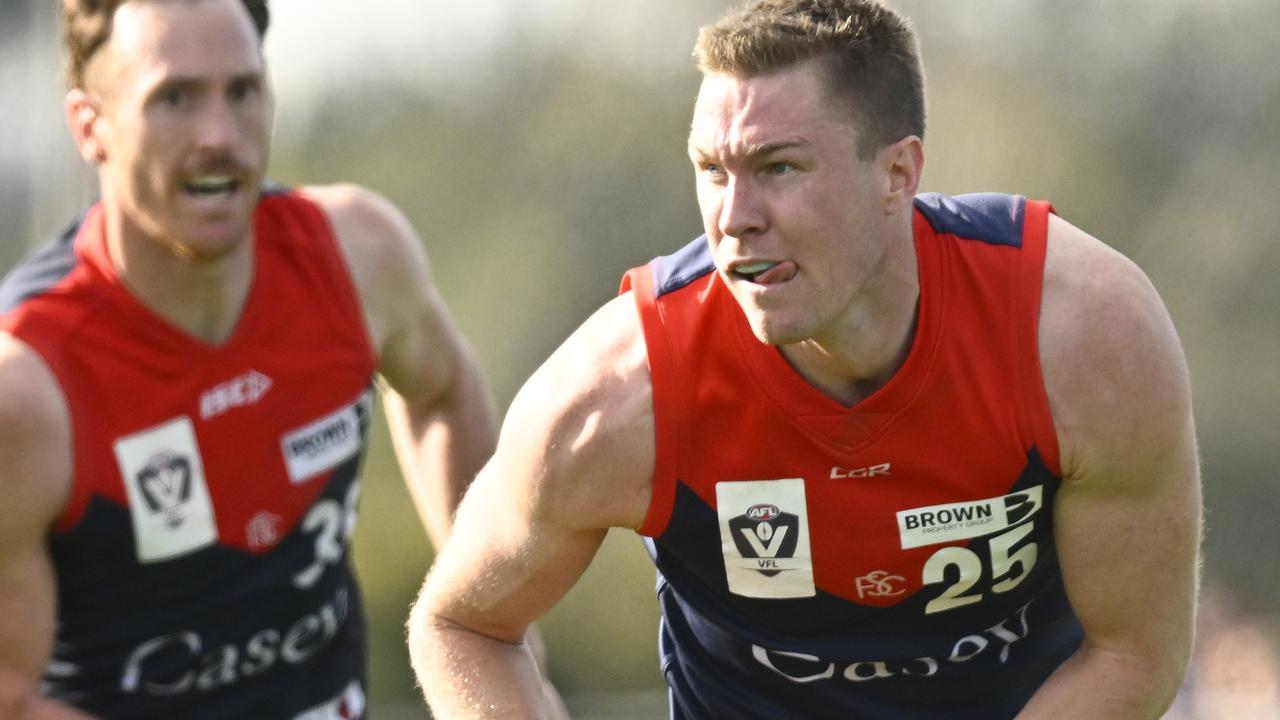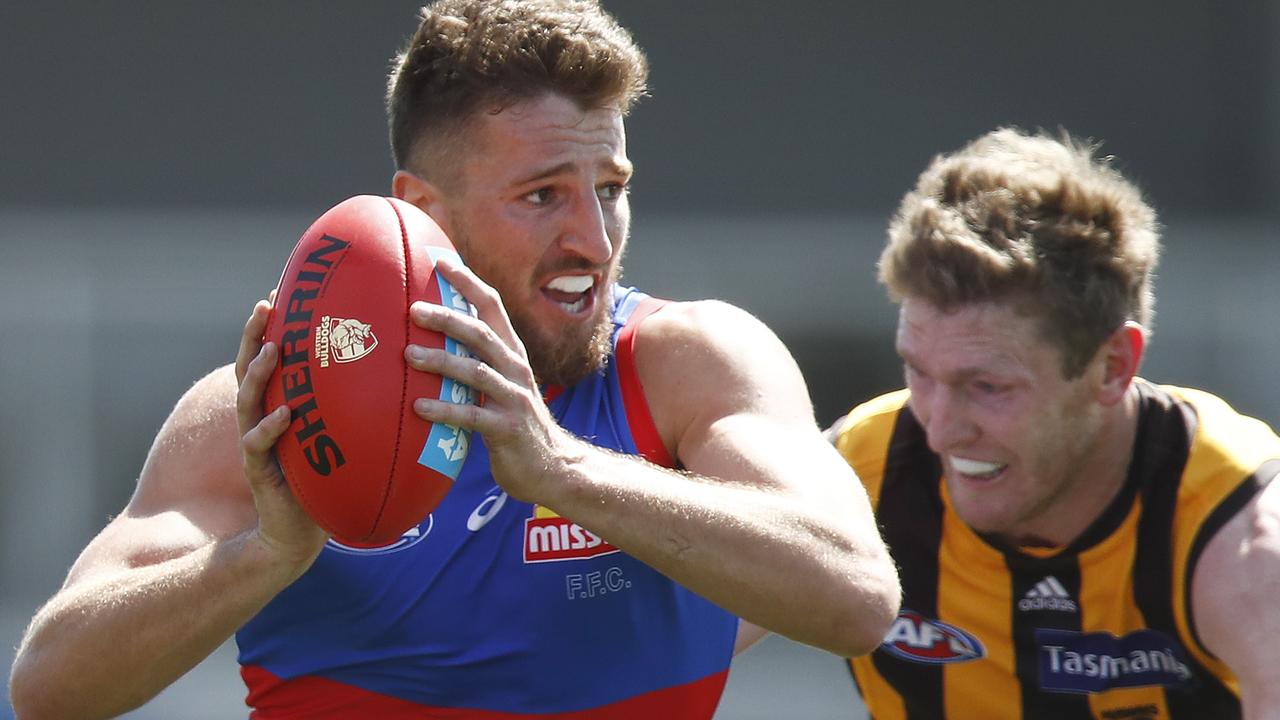David King: Geelong’s midfielders the key to stopping Nic Naitanui in Friday night’s semi-final
West Coast is a two-goal better team at centre bounces with Nic Naitanui but Geelong has a method to limit the damage of arguable the game’s most destructive ruckmen, writes David King.
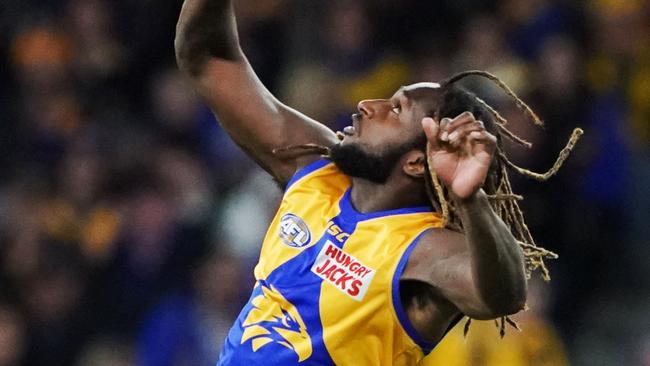
David King
Don't miss out on the headlines from David King. Followed categories will be added to My News.
Nic Naitanui is Mr 6-6-6.
He is the only player who has been able to exploit the set starting positions at centre bounces this year.
MORE NEWS
Roo beauty! Goldstein snubs Cats mega deal
Why the outrage about Harris statue
He is the AFL’s most destructive centre square influence and inspires the Eagles.
While Naitanui has been largely misunderstood for the bulk of his career, there is no mistaking that he is the game’s most difficult weapon to diffuse.
How can you minimise or curtail Naitanui’s sheer power or pure tap work, which is generally at the football’s highest point?
The Eagles are a completely different proposition with Naitanui.
At centre bounces West Coast is a 2½-goal better team with Naitanui than without.
The average scores from centre bounces this year is only 10 points per team — the 2019 finalists average only slightly more — but the Eagles across Naitanui’s four AFL games this season average 25 points.
That’s a massive advantage in a small margin finals series.
If the Cats were disturbed about Brodie Grundy, then where do they go regarding Nic Naitanui?
The double-up goals are games greatest bonus.
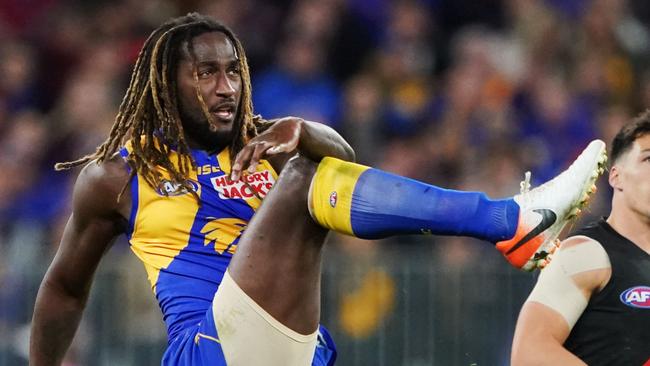
Score a goal, back to centre bounce and immediately score another.
He has become a “12-point play” specialist, after the Eagles kick a goal he can orchestrate another straight away.
The Eagles and Mr 6-6-6 have committed four “12-point plays” including two “18-point plays” over the past two games.
The Eagles against Hawthorn scored four of their total nine goals in a five-minute window. What an unbelievable advantage.
Adam Simpson refers to the ruckman as their “Patrick Dangerfield” such is the stimulus he provides to the playing group let alone creating tremendous scoring thrusts.
Under Friday night lights at the MCG, Nic Nat will need to ensure the Eagles version of Patrick Dangerfield doesn’t feed the Geelong version that is Patrick Dangerfield.
Stream every match of the 2019 Toyota AFL Finals Series before the Grand Final Live & On-Demand on KAYO SPORTS. Get your 14 day free trial and start streaming instantly >
GROUND HOG CATS
Geelong’s ground level midfield crew has been tougher and the first to assess the hitout drop zone than its opponents, particularly over the past five weeks.
The Cats averaged 17 less hit-outs, with eight of those to their direct opponent’s advantage, yet they have still won the clearance battle by an average of plus-seven clearances during that period.
The ability of Patrick Dangerfield, Tim Kelly and Joel Selwood to get their hands to the oppositions ruck tap is phenomenal.
They’re effectively starting in a disadvantaged position at each-and-every stoppage.
In the past five weeks Geelong has lost hit-outs by 87, but has taken first possession of the ball post-tap 31 times more than their opponents. This is truly amazing.
If Geelong cannot dominate territory, it is in massive trouble to score, but that doesn’t necessarily ensure it concedes scores to the Eagles.
There’s been criticism regarding the lack of dare and/or speed from the Cats’ defensive half of the field, but this is who they are.
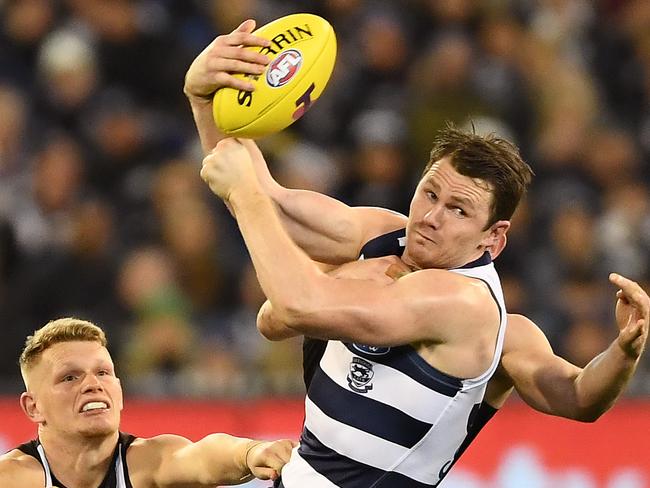
The Cats will counter-attack wide, along the boundary line or “skinny side”, which is the modern term, as it’s been effective all season.
The Cats only concede 20 points per game on turnover from counter-attack in their defensive half.
Not only is that remarkably the AFL’s best this season, it’s the second lowest recorded for the past decade, only bettered by themselves in 2016.
The Cats method simply refuses to be self-defeating.
The in-game scoreboard dictates whether alterations are required to this method.
I’d suggest the Cats ball movement won’t be altered early in proceedings on Friday night. It’s the way Geelong play.
Like it or not, it’s been successful this year.
START IS CRUCIAL
More critically Geelong requires a first quarter fire starter as a priority rather than a drastic mechanical upheaval in the second week of a final’s series.
Someone needs to light up in the first 10-15 minutes as the Cats’ first quarters in finals over the last 2-3 series have been poor.
All things point to a nailbiting, low-scoring clash between two of the “safer” ball movement teams, which generally ensures the result is dictated by moments both positive and negative.
West Coast had a “finals fill-up” versus an undermanned and clearly wounded Essendon last week and all will feel tremendous confidence.
By contrast the Cats have felt the brunt of heavy criticism and cannot wait for that first siren!
It’s a ruthless game at this time of year and the only way to avoid any fallout, any feedback, is to win.
Let’s be honest, that’s been the case for 100 years.
But do not put the kettle on after a goal … you may just miss Mr 6-6-6!!
BURNING QUESTIONS
Can Geelong avoid a straight-sets finals exit?
Since the current top-eight system was introduced in 1994, no minor premier has been bundled out of September in straight sets. The Cats sure won’t want to be the first to do that, but their finals record is a worry. Geelong has a 3-10 record in finals since 2012 and has lost its past three games at the pointy end of the season, including to Collingwood by 10 points last week. However, since Round 12 the Cats have gone WLWLWLWLWLWL. That sequence suggests a win is due next.
Can the Cats make a better start?
In their past three finals, Geelong has now lost all three first quarters by a combined 78 points. Star midfielder Patrick Dangerfield acknowledges it is a trend and one that his side must turn around. The Cats gave up a 20-0 start to Collingwood in the opening 12 minutes of their qualifying final. They won the rest of the game by 10 points, but that start came back to bite as they still fell 10 points short. Dangerfield says his team has to come out with a “steely resolve” and play with a “bit of flair” to ensure it is not put on the “back foot” once again.
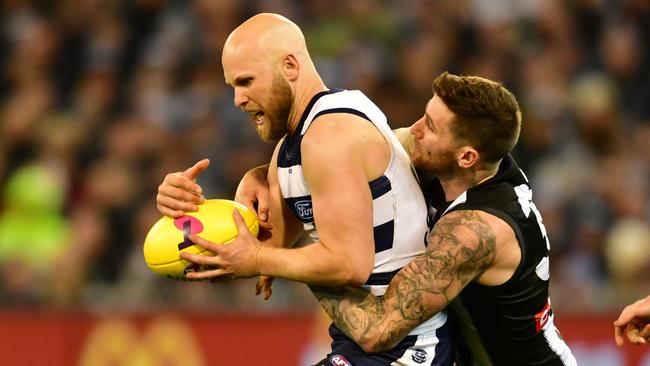
Will Geelong’s forwards step up?
At Round 12, Geelong was the highest scoring team in the competition, averaging 99.3 points a game. In the final 10 games of the regular season, the Cats ranked 9th for scores for, averaging just 79.2 points a game. They managed just 51 points against Collingwood in the qualifying final — their lowest score of the season. Tom Hawkins hasn’t kicked a goal from his past three games. Gary Ablett has gone goalless in three of his past four games. Esava Ratugolea has gone goalless in three of his past five games. Some of it is about out-of-form players, but some is also about poor ball use going forward.


